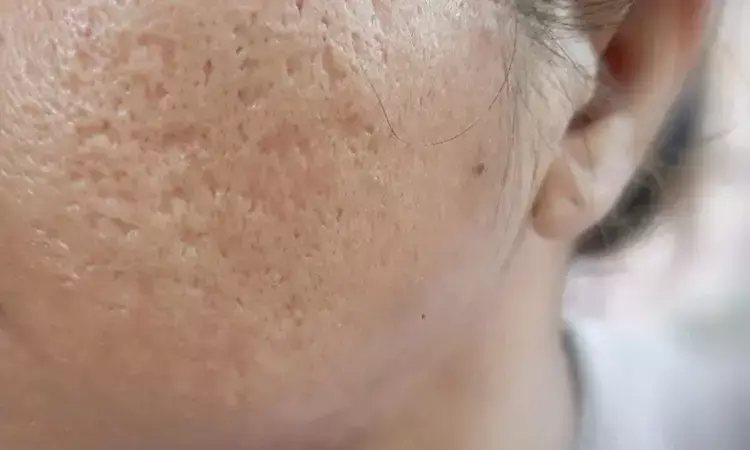- Home
- Medical news & Guidelines
- Anesthesiology
- Cardiology and CTVS
- Critical Care
- Dentistry
- Dermatology
- Diabetes and Endocrinology
- ENT
- Gastroenterology
- Medicine
- Nephrology
- Neurology
- Obstretics-Gynaecology
- Oncology
- Ophthalmology
- Orthopaedics
- Pediatrics-Neonatology
- Psychiatry
- Pulmonology
- Radiology
- Surgery
- Urology
- Laboratory Medicine
- Diet
- Nursing
- Paramedical
- Physiotherapy
- Health news
- Fact Check
- Bone Health Fact Check
- Brain Health Fact Check
- Cancer Related Fact Check
- Child Care Fact Check
- Dental and oral health fact check
- Diabetes and metabolic health fact check
- Diet and Nutrition Fact Check
- Eye and ENT Care Fact Check
- Fitness fact check
- Gut health fact check
- Heart health fact check
- Kidney health fact check
- Medical education fact check
- Men's health fact check
- Respiratory fact check
- Skin and hair care fact check
- Vaccine and Immunization fact check
- Women's health fact check
- AYUSH
- State News
- Andaman and Nicobar Islands
- Andhra Pradesh
- Arunachal Pradesh
- Assam
- Bihar
- Chandigarh
- Chattisgarh
- Dadra and Nagar Haveli
- Daman and Diu
- Delhi
- Goa
- Gujarat
- Haryana
- Himachal Pradesh
- Jammu & Kashmir
- Jharkhand
- Karnataka
- Kerala
- Ladakh
- Lakshadweep
- Madhya Pradesh
- Maharashtra
- Manipur
- Meghalaya
- Mizoram
- Nagaland
- Odisha
- Puducherry
- Punjab
- Rajasthan
- Sikkim
- Tamil Nadu
- Telangana
- Tripura
- Uttar Pradesh
- Uttrakhand
- West Bengal
- Medical Education
- Industry
Dye and CO2 Laser Combo Emerges as Effective Option for Stubborn Acne Scars: Case Series

Italy: In a recent case series published in AME Case Reports, researchers have highlighted the effectiveness of a dual laser strategy for managing vascularized acne scars in young adults. The approach, which combines dye laser and fractional CO₂ laser therapy, showed promising results in enhancing cosmetic appearance and patient satisfaction.
Acne vulgaris is a common dermatological issue, affecting nearly 85% of individuals between 12 and 25 years old. Among those affected, around 47% report lingering scars that can significantly impact self-esteem and quality of life. While several treatment options exist, not all are effective or well-tolerated by every patient. In light of this, Giovanni Cannarozzo, Medical Europe Center Clinic, Florence, Italy, and colleagues explored a multi-modal approach using two different laser modalities to target separate aspects of scar healing.
The study involved 31 patients aged between 20 and 35, all presenting with vascularized acne scars. Treatment was initiated using a 595 nm pulsed dye laser aimed at reducing vascularization and skin inflammation, followed by fractional CO₂ laser therapy focused on promoting skin resurfacing and remodeling. Typically, each patient underwent two sessions of dye laser therapy and two sessions of CO₂ laser therapy.
Importantly, the treatment process incorporated a skin contact sensor with the laser device to enhance safety and precision. The outcomes were measured using the 4-point Global Aesthetic Improvement Scale (GAIS), where patients rated their perceived improvement as “none,” “slight,” “mild,” or “excellent.” According to the findings, 77% of participants rated their improvement as “excellent,” 16% reported “mild” improvement, and 7% noted “slight” improvement.
The results emphasize the therapeutic potential of combining different laser technologies in dermatology. While dye lasers have long been recognized for their role in managing vascular lesions, hypertrophic scars, and keloids, CO₂ lasers have shown success in remodeling atrophic scars. However, few studies have assessed the combined application of these two modalities for acne scar treatment.
This case series supports the idea that a tailored, patient-specific approach, targeting both inflammation and tissue remodeling, may yield superior outcomes for individuals with vascularized acne scars, particularly those unresponsive to conventional treatments.
The researchers emphasize the importance of early intervention to prevent worsening and chronic persistence of acne scarring. They also call for larger-scale studies to validate these findings and compare outcomes between combined therapy and single-laser treatments.
"This dual-laser protocol offers a safe and effective alternative for managing difficult acne scars, improving skin appearance and patient satisfaction. With further research, it may become a standard part of therapeutic strategies in aesthetic dermatology," the researchers concluded.
Reference:
Cannarozzo G, Pennati BM, Fusco I, Campolmi P, Zingoni T. Multi-modal approach with dye laser and CO2 laser for the resolution of vascularized acne scars: a case series. AME Case Rep 2025;9:36.
Dr Kamal Kant Kohli-MBBS, DTCD- a chest specialist with more than 30 years of practice and a flair for writing clinical articles, Dr Kamal Kant Kohli joined Medical Dialogues as a Chief Editor of Medical News. Besides writing articles, as an editor, he proofreads and verifies all the medical content published on Medical Dialogues including those coming from journals, studies,medical conferences,guidelines etc. Email: drkohli@medicaldialogues.in. Contact no. 011-43720751


